Check "Cheap Vacations" on Amazon: http://amzn.to/2uwUxYD
The One Bag Traveler recommends Gear, Destinations and Adventures.
The Northern Lights are one of nature's most majestic artistic displays. For thousands of years, the neon glow of the aurora have captured the curiosity of humans across the globe. With the ever-growing ease of travel and technological advancements, chasing the Northern Lights has never been easier.
What are the Northern Lights?
The Northern Lights, also known as the Aurora Borealis, occur when excited solar particles collide with atmospheric gases. This produces a neon light show that can last for minutes or even days at a time.
One lesser known fact is that the aurora can be seen in both the northern and southern hemispheres. In the northern hemisphere, they're known as “Aurora Borealis” or “Northern Lights”. In the southern hemisphere, they are “Aurora Australia” or “Southern Lights”. It is the same natural phenomenon, only it occurs in different regions.
The best time to see the Northern Lights
The best time to see the Northern Lights is during cold, dark nights with clear skies. Some regions of the world have sightings year round, but your odds are greatest during winter when the nights are longer, colder, and clearer.
Quick Tips for Aurora Spotting:
- Escape the city lights. Light pollution affects visibility of stars and aurora. Where possible, leave cities and seek out dark skies.
- Be in the know-how of realtime aurora sightings: Every aurora region has realtime alerts to let people know about aurora sightings. In this article, we've included the specific aurora alert systems for each country though Aurora Alerts is generally popular worldwide.
- Go at the right time: Aurora are more common in winter due to the extended hours of darkness. Clear skies are essential.
- Photographing aurora: This can be tricky, so do your research ahead of time. Check out A Globe Well Travelled's guide to snapping the aurora clearly and brightly.
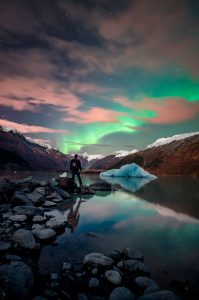
Where can you see the Northern Lights?
The Northern Lights can be found in the “aurora zone” in the Northern Hemisphere. This is an area of 2,000-3,000km from the magnetic pole, or at a latitude of 66 to 69 degrees north. The closer you are to this region, the better your odds of catching the lights.
So, keen to add some aurora-spotting to your bucket list? Here's the best places to see the Northern Lights around the world!
The best places to see the Northern Lights:
1. Alaska, USA
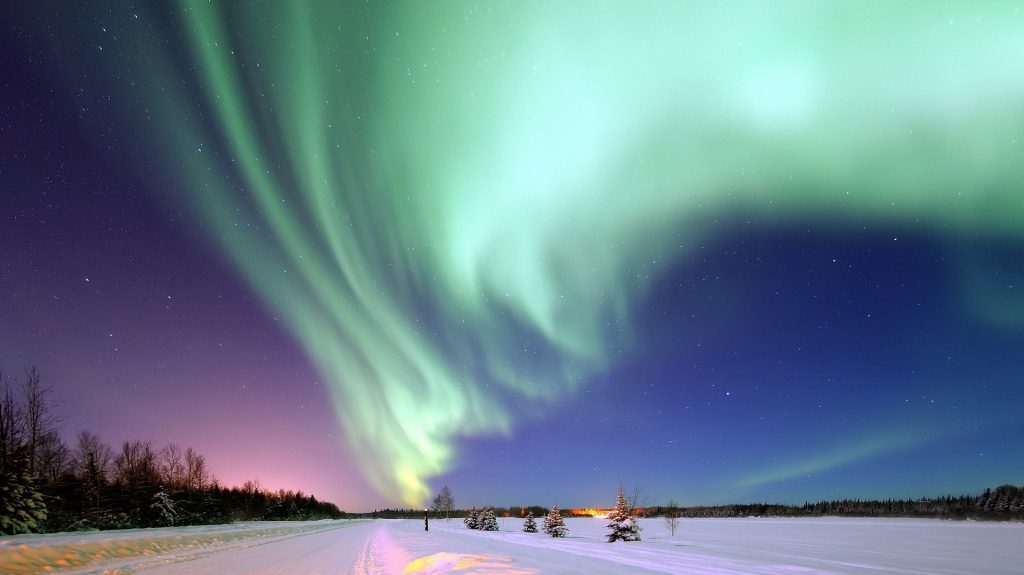
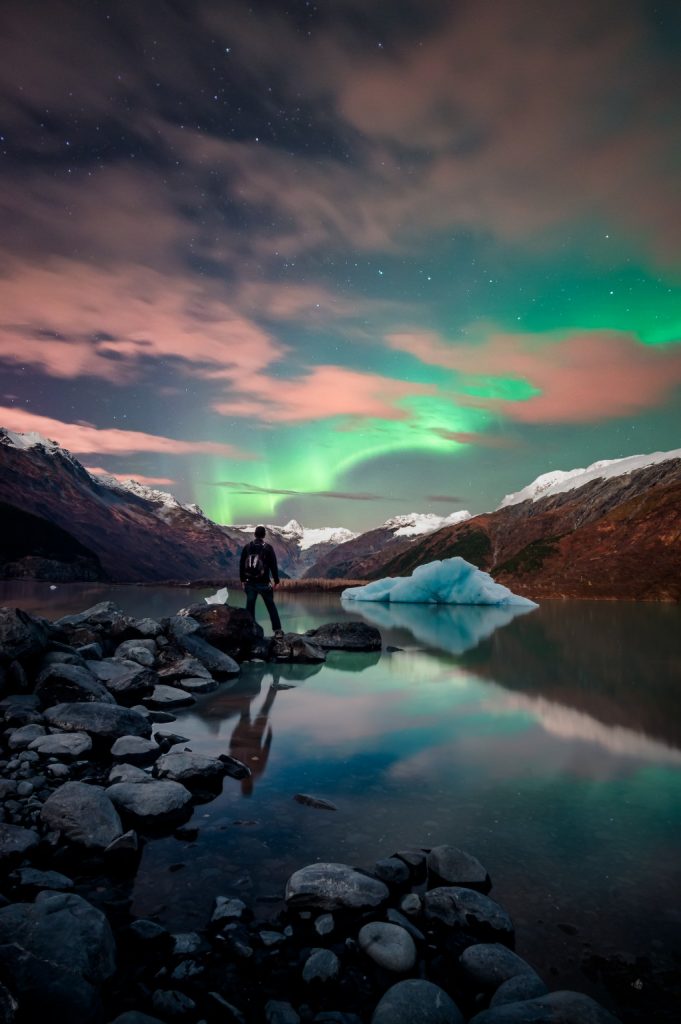
Alaska is one of the best places on earth for spotting aurora. Here the cold weather, clear skies, and dark nights make for optimal aurora spotting conditions. But don't let the chilly nights put you off – you can even aurora-gaze from steaming hot springs. With an abundance of epic wildlife (grizzly bears, moose, eagles, and more) and infinite mountains, Alaksa has plenty to offer beyond the lights.
Where: Nearly all of Alaska is great for aurora spotting, though Fairbanks is located in the aurora oval and is a good base for travel. Those pressed for time can do a condensed trip from Vancouver.
When: Winter months are ideal due to longer nights, but year-round is possible.
How: You can camp, drive, or view the aurora from the comfort of a heated cozy AirBNB cabin or lodge. Flight-seeing is another popular way to witness the magic of the Northern Lights from the air. Other unique aurora sightseeing tours include dog sledding and photography focused tours.
Getting there: Alaska is accessible by flights from North America (search Skyscanner by entire month for the best prices), or cruise. Fairbanks, Anchorage, and Juneau are the main cities to fly into.
Resources: Aurora Borealis Notifications, Smithsonian's guide to Northern Lights in Alaska
2. Northern Canada
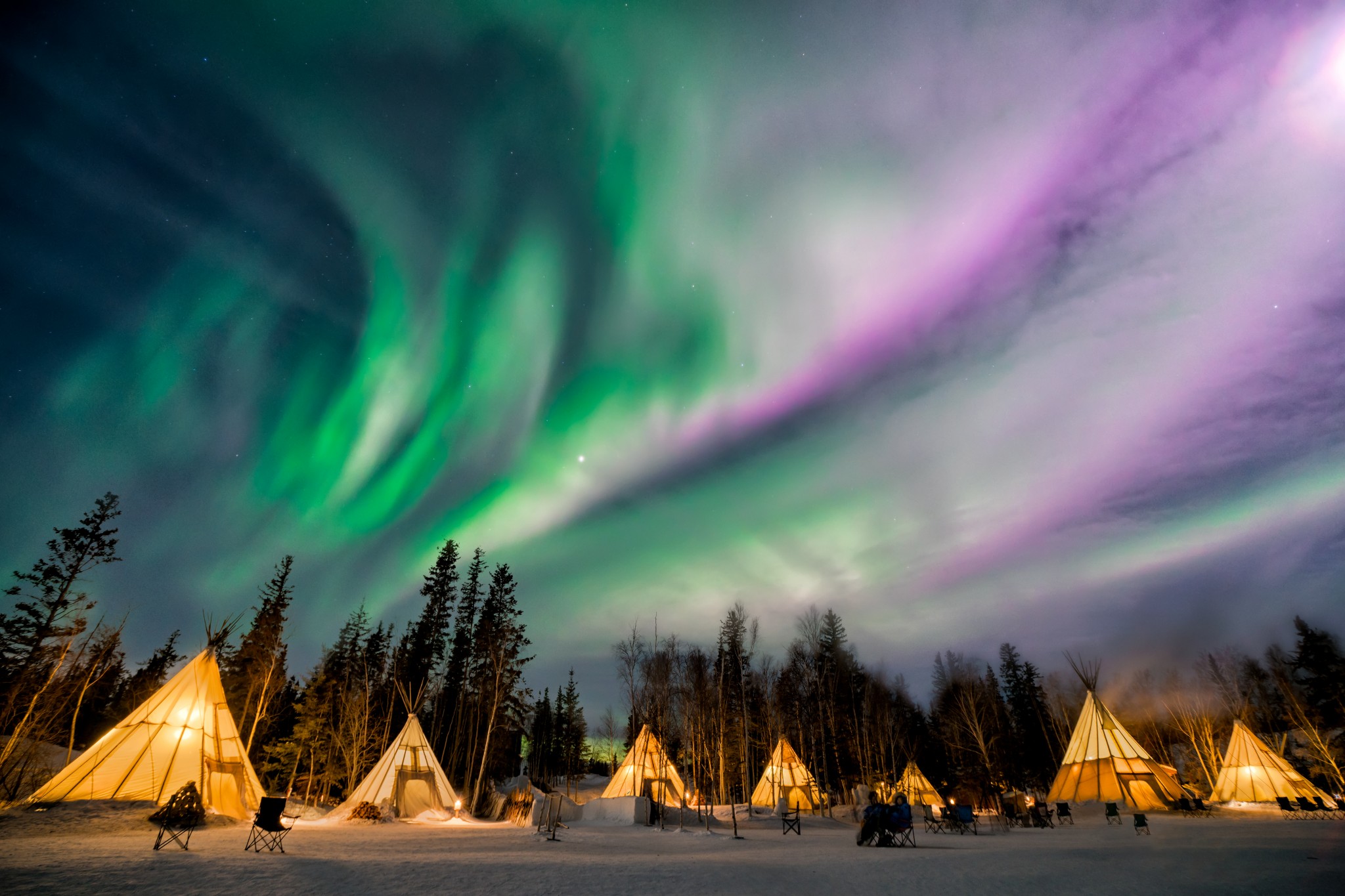
Aurora Borealis over Yellowknife, Northwest Territories
Northern Canada is a treat for those seeking eerily remote, pristine wilderness. Many parts of Northern Canada witness the Aurora Borealis regularly, with the Northernmost territories and Yukon being some of the world's greatest hotspots.
Planning a trip to Canada? Check our ultimate guide to visiting here affordably. Don't miss our national parks hotlist, plus our must-do Canadian bucket list.
Where: The Northern region of Canada is best – mainly Yukon, Northwest Territories, and Nunavut (though there is less aurora tourism here).
When: Late August to mid April.
How: You can self-camp, campervan, or scout out a cozy AirBNB cabin. In Yellowknife, there are one day, two-day, three-day, four-day, and five-day aurora tours where staff keep an eye for aurora overnight and assist with photo taking. The Yukon offers one-day and 4-day tours. If visiting from British Columbia, there are complete tours departing from Vancouver.
Getting there: The north is accessible by flights within Canada (search Skyscanner by entire month for the best prices). Whitehorse and Yellowknife are the main cities to fly to.
Resources: Aurora Borealis Notifications, Soft Serve News
3. Iceland
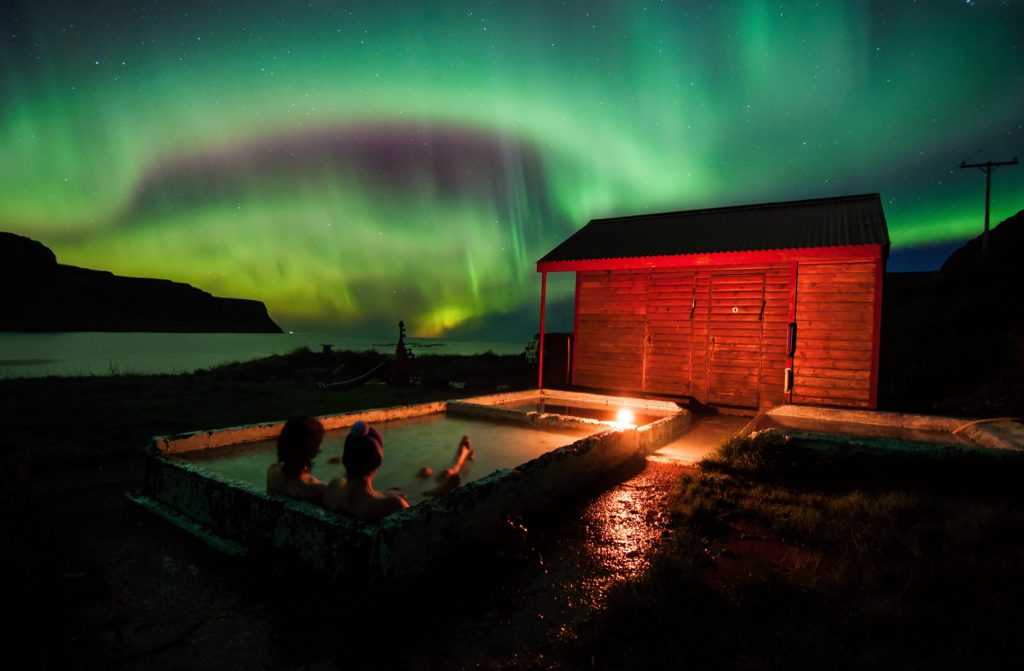
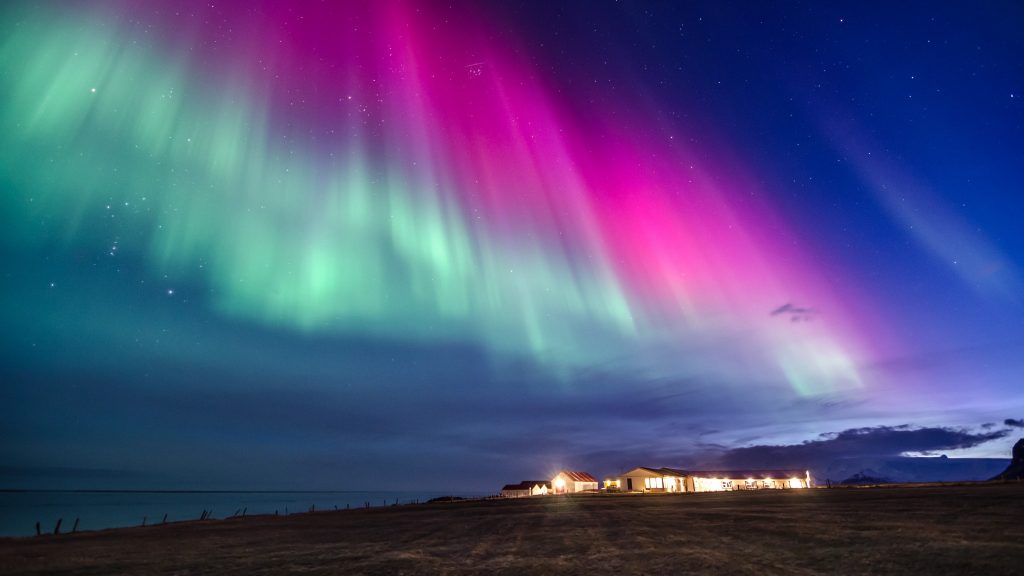
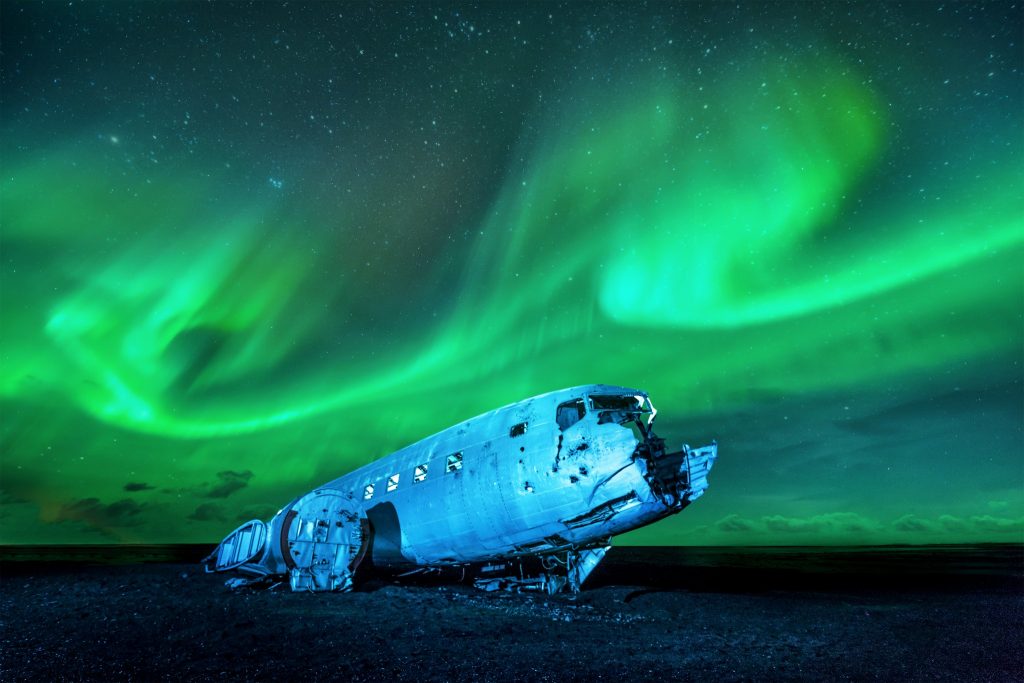
Volcanic landscapes, geothermal hot springs, and majestic waterfalls are but a sliver of Iceland's allure. Here the aurora can be spotted from the comforts of thermal hotsprings, or the serenity of your own private campervan in the untouched wilderness.
Where: All of Iceland – check this thorough guide here. Some great options include: Seltjarnarnes in Reykjavik, Vik, Látrabjarg/Westfjords, Eldborgahraun, Djúpavík
When: Early September to the end of April.
How: Tent camping or campervan is a great way to whimsically chase aurora. Alternatively, group tours are popular. Iceland is oozing with quaint and chic AirBNB cabins to choose from, which may offer picture-perfect aurora views. In downtown Reykjavik, you may even witness the aurora from the comfort of the famous Blue Lagoon. Tours are plentiful, ranging from cruises and jeep tours, to combined Northern lights hunting with ice cave or glacier walks.
Getting there: Iceland is reachable by flights (search Skyscanner by entire month for the best prices) and there are now many budget airlines including Wow Air running affordable trips there from Europe and North America.
Resources: Aurora Borealis Notifications, weather website
4. Norway

Northern Lights over Nappstinden, Norway
With its vibrantly coloured fishing villages, gaping fjords, and expansive nature, Norway is more than just an aurora hotspot – it's pure magic. This is one of the more comfortable places to chase the Northern Lights. The country is already easy to get around, and aurora spotting options are diverse.
Planning a trip to Europe? Check our Eurail pass guide here for useful tips on train travel.
Where: There are many hot spots on offer here but some good ones include Svalbard, Tromso, The Lofoten Islands, Harstad, Bodo, Alta, Andoya, and Lakselv.
When: October to March.
How: Get a log cabin with world-class aurora views or try your luck camping or caravaning. Norway has spectacular aurora tours, and one wise strategy is to purchase a Northern Lights 7-day unlimited pass to increase your chances of sightings. The pass provides daily access to Northern Lights tours, which is ideal since aurora can be sporadic. Tours are abundant, ranging from reindeer-sledding and whale watching, to a night cruises and private flights (note: not all of these tours are included in the pass).
Getting there: Norway is accessible by abundant flights within Europe (search Skyscanner by entire month for the best prices), or by train. For Eurail pass tips, check our guide here.
Resources: Norway Lights Forecast and Aurora Borealis Notifications. Camping resources here.
5. Finland
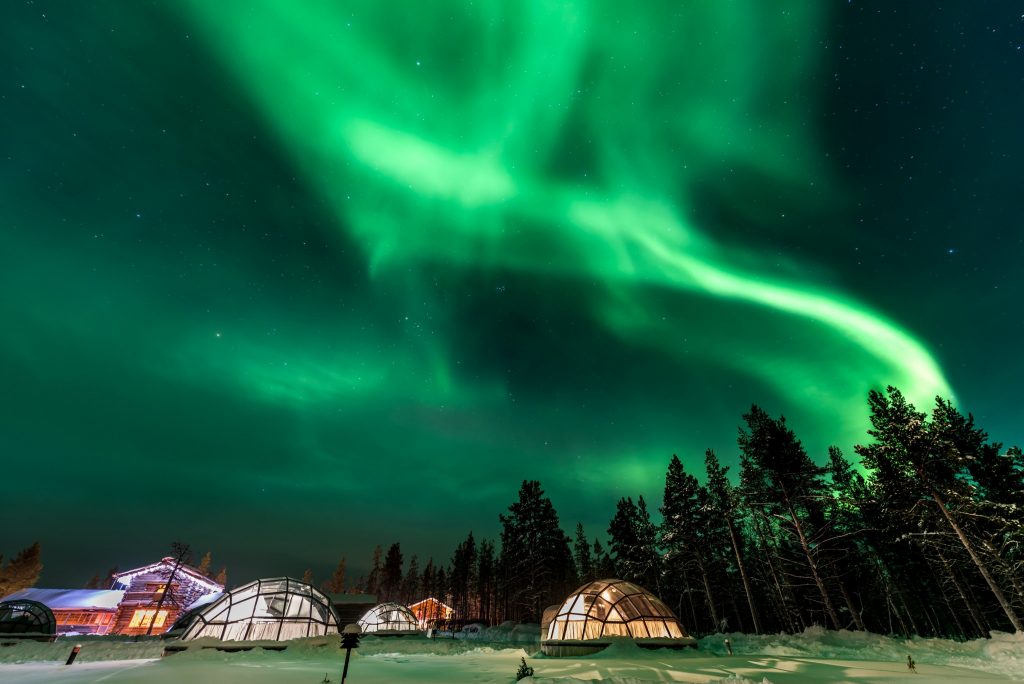
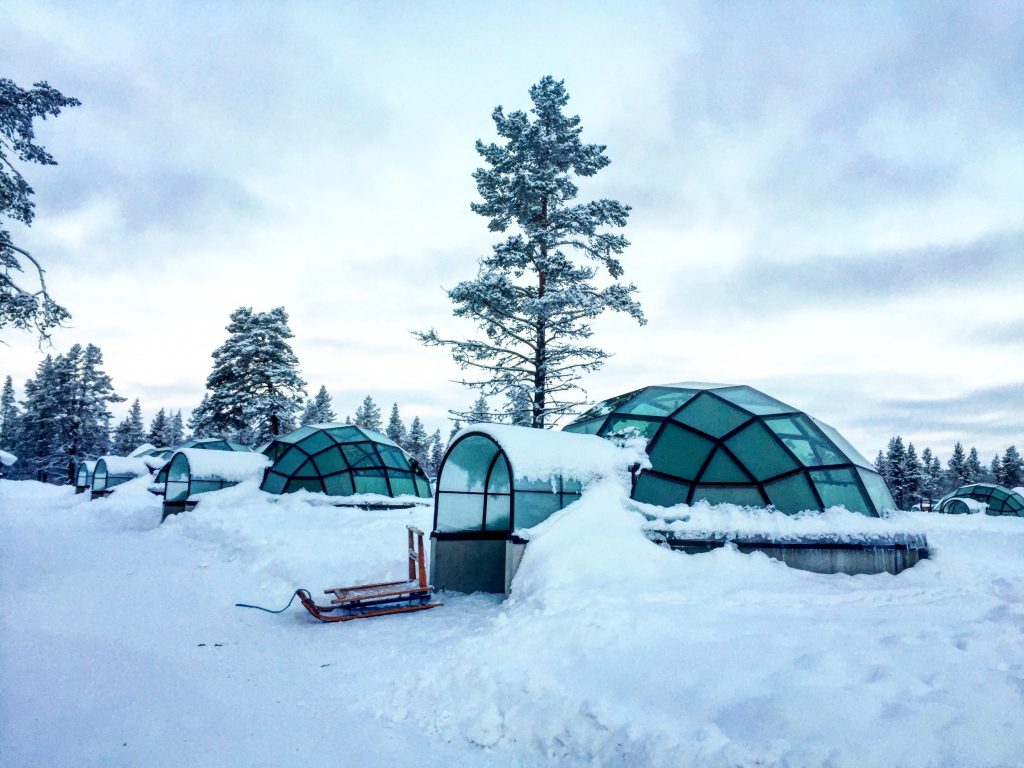
In northern Finland the lights shine nearly every other night from September to March, making this an optimal aurora choice. But be warned – temperatures can get quite cold. The solution? Stay in a purpose-built glass igloo to enable aurora viewing right from the comfort of your warm bed.
Planning a trip to Europe? Check our Eurail pass guide here for useful tips on train travel.
Where: Just about anywhere (away from city lights) – far north is your best bet. Kakslauttanen is a popular spot with gorgeous glass igloos.
When: September to March.
How: Staying somewhere designed for viewing is ideal due to frigid temps. Dreamy glass igloos, snow igloos, cabins, snow hotels, and wooden chalets are all great ways to see the aurora from a warm bed! Other unique aurora activities here include snowmobile safaris, reindeer sleighs, ice floating, snow shoeing, 4WD, photography tours, and more. You can even ring in 2019 (hopefully) watching aurora from your glass igloo!
Getting there: Finland is accessible by abundant flights within Europe (search Skyscanner by entire month for the best prices), or by train. For Eurail pass tips, check our guide here.
Resources: The Finnish Meteorological Institute has realtime aurora data, and Aurora Borealis Notifications
6. Russia
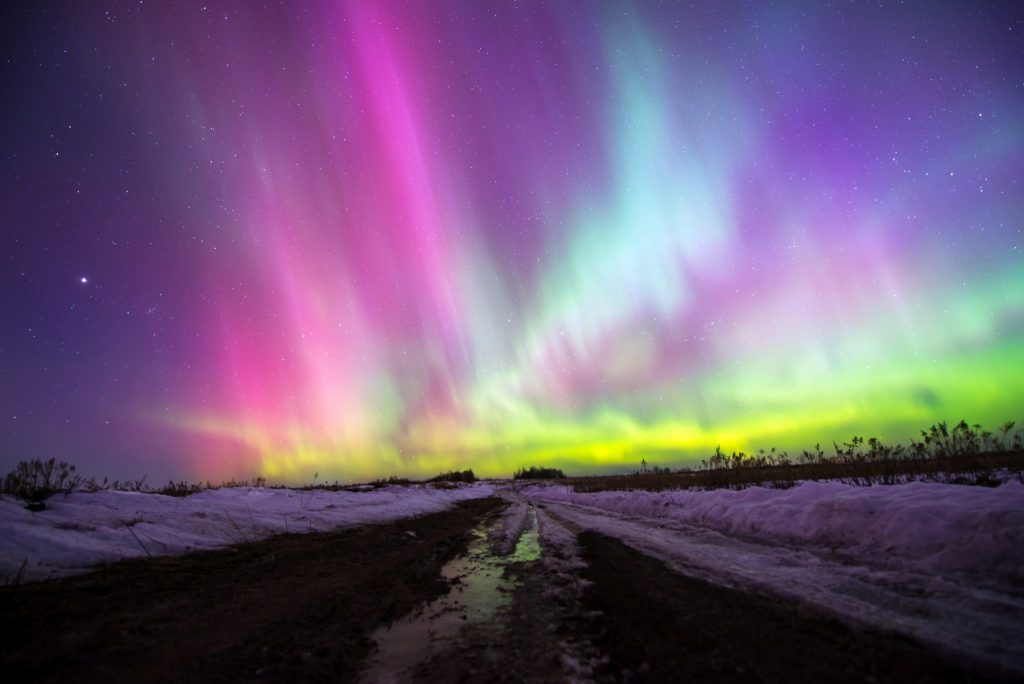
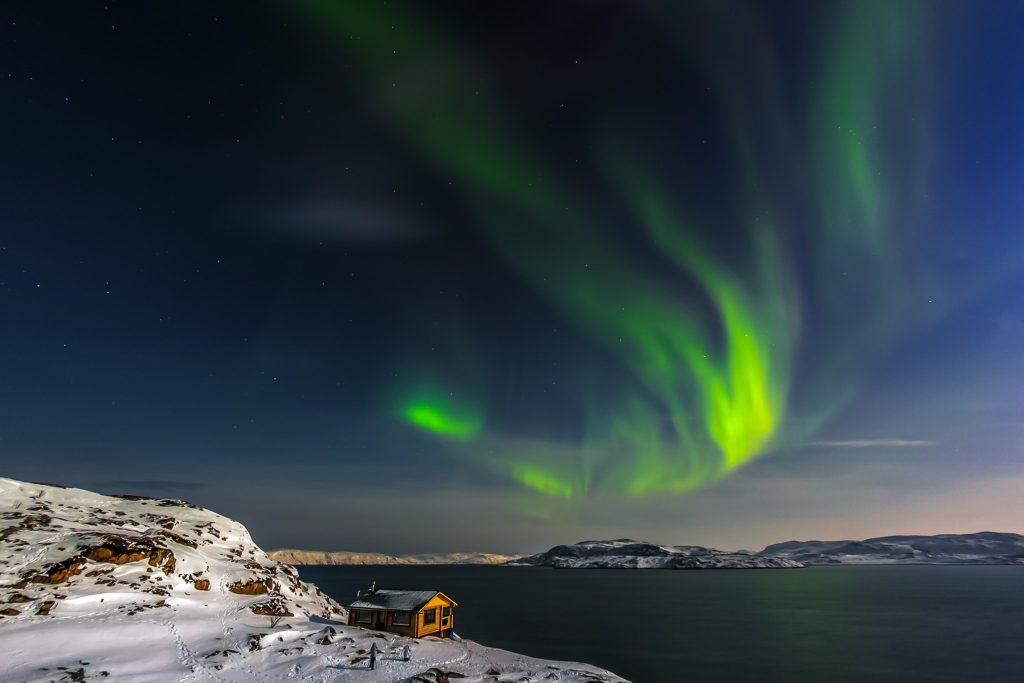
A large part of Russia lies within the Arctic Circle, making this massive continent a gold mine for aurora spotting. The Kola Peninsula is a prime location, with the town of Murmansk being an accessible base. For more detailed instructions on visiting Russia to see aurora, check this guide.
Where: Many regions in the north, although more tourist-friendly areas accessible from St. Petersburg include Murmansk, Arkhangelsk, Petrozavodsk.
When: September to March, although January and December are optimal due to the complete absence of sun for 6 weeks in some northern areas.
How: Visible from outdoors when there is minimal light pollution via camping, driving, or joining a tour. In some cities you can find English AirBNB listings which may provide aurora sightings. Tours can be found in popular regions, check based on your location.
Getting there: Russia is accessible by flights, with Moscow or St. Peter's being the most common starting points. Search Skyscanner by entire month for the best prices.
Resources: Quick guides here and here. A thorough guidebook such as Lonely Planet is recommended as Russia is a bit more effort to travel in than other aurora destinations.
7. Sweden
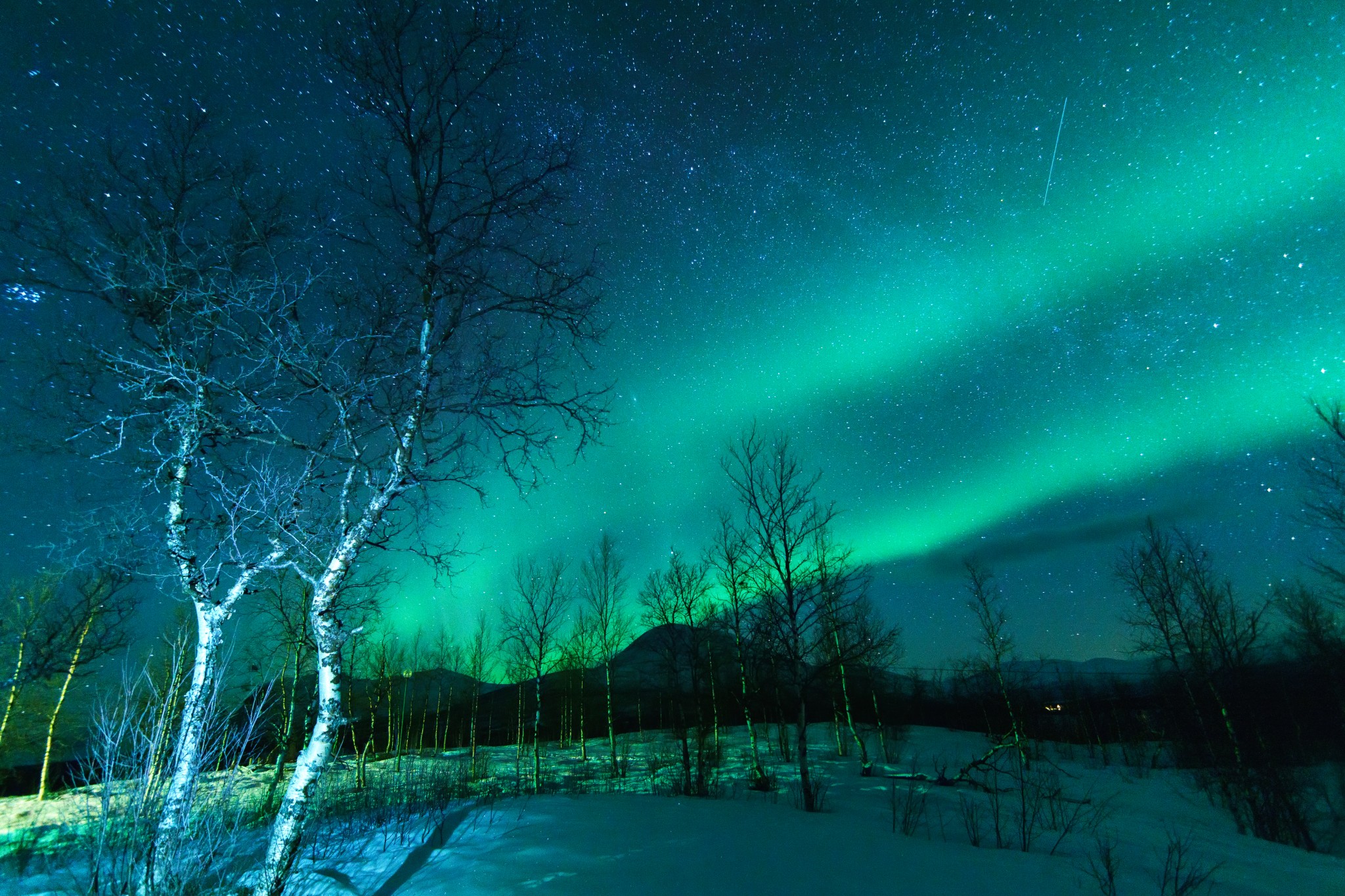
Aurora over a forest in Lapland, Sweden
Another famous, albeit pricier destination for chasing the aurora is Sweden. Thanks to the effects of the Gulf Stream, the temperatures here are milder compared to other popular aurora regions like Canada and Russia. It's also easily accessible by flights throughout Europe, making it a feasible stop on any Euro-trip.
Planning a trip to Europe? Check our Eurail pass guide here for useful tips on train travel.
Where: Most of Sweden is optimal once you escape city lights. Your best bet is generally from the Northern border with Norway to Jokkmokk. Some places include Abisko, Tärendö, Jukkasjärvi, and Farnebofjarden National Park (just 140km from Stockholm).
When: September to the end of March.
How: You can venture on your own camping or get a cozy cabin in the forest. There are also several inexpensive aurora-focused tours such as husky-sledding or a photography-focused tour. A more extensive option is a Northern Lights and wildlife centred tour through Lapland.
Getting there: Sweden is accessible by abundant flights within Europe (search Skyscanner by entire month for the best prices), or by train. For Eurail pass tips, check our guide here.
Resources: Routes North has great guides to Scandinavia travel, and Aurora Borealis Notifications
8. Greenland
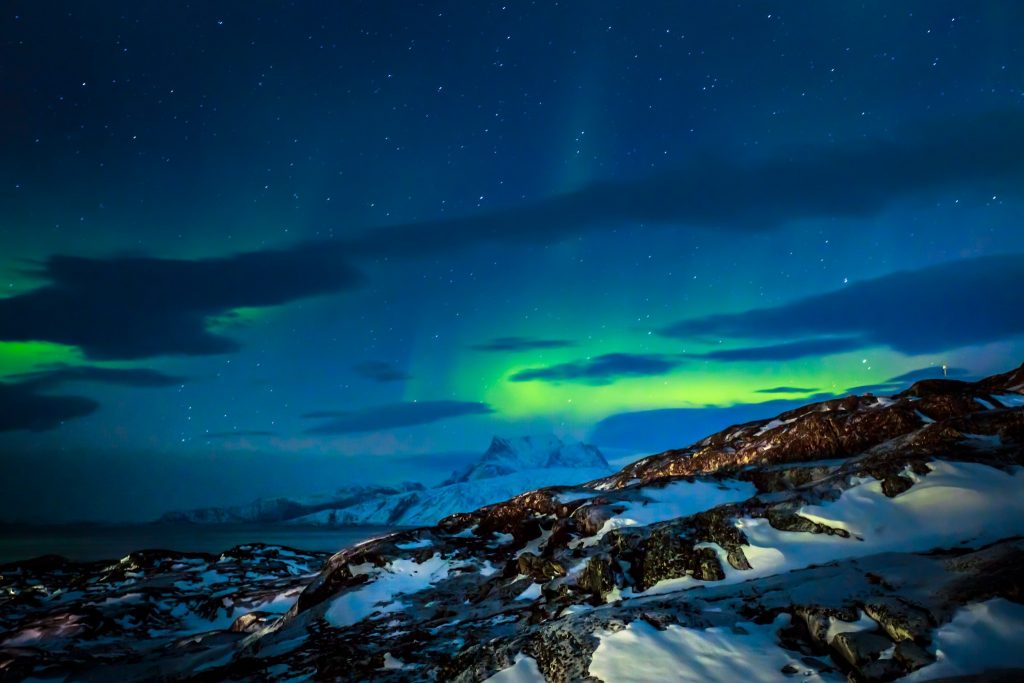
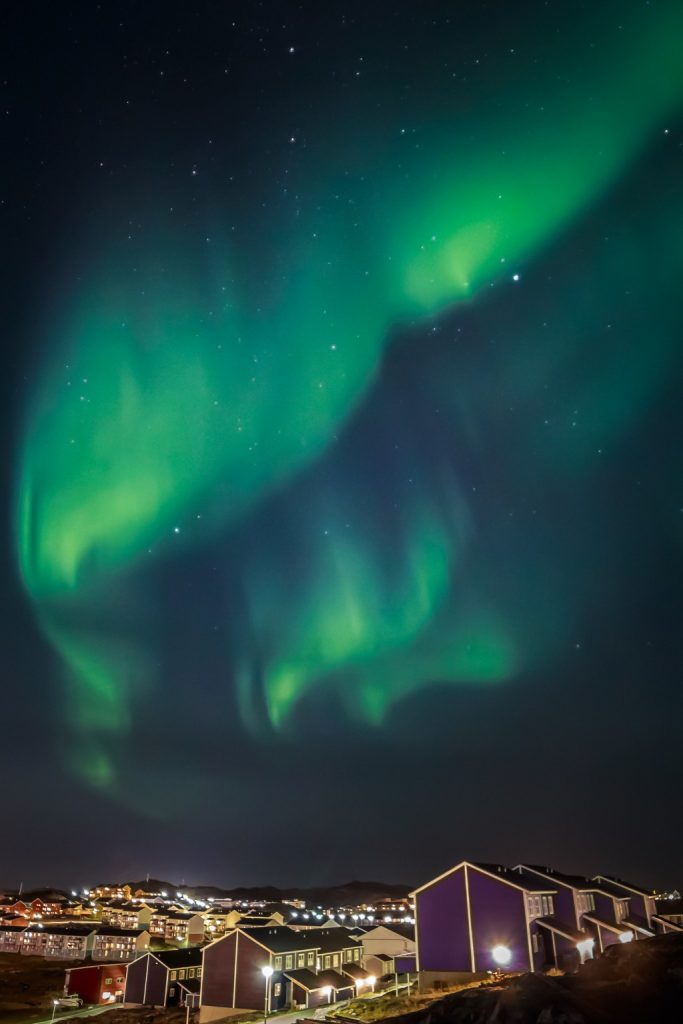
A great slice of Greenland is poised perfectly within the aurora zone. Better yet, this quiet island country is far less trampled with tourists than its northern neighbour, Iceland. That's not without reason though; here there are no roads, making plane and boat the primary transport means. The plus? Icebergs and aurora are nearly all yours!
Where: Southern Greenland is ideal, as too far north exits the aurora zone. You'll want to base yourself in Ilulissat or Nuuk, which both offer unique aurora tours.
When: Mid-August – late April.
How: Rent an AirBNB with glacier (& potentially aurora) views. A private charter boat is another option for combined accommodation and sightseeing. Feeling adventurous? Try a guided aurora tour in the snow either via snowmobile, snowshoe, or dog sled.
Getting there: Greenland is accessible by flights from Europe and North America. Search Skyscanner by entire month for the best prices.
Resources: Space Weather Prediction Centre, Aurora Alerts
The Thrifty Gist
- The Northern Lights or Aurora Borealis are best spotted in winter months where the nights are dark, long, and cold
- Regions that lie within the aurora belt – that is 66 to 69 degrees latitude from the North, are best for prime spotting
- Escape the city lights where possible to improve visibility
- Give yourself time to spot aurora, they do not appear every night, even in the most high-frequency locations.
As illusive as the Northern Lights can be, this majestic sight is well deserving of all efforts to witness them. Which of these places is at the top of your aurora spotting bucket list?
Note: there are many unexpected places globally to spot the aurora, however we have only mentioned locations with the best odds of sightings. For instance, the Faroe Islands, Estonia, Scotland, Ireland and parts of China see the Northern Lights, but the frequency is so sporadic that we have excluded them from this list.
--------------------------------
